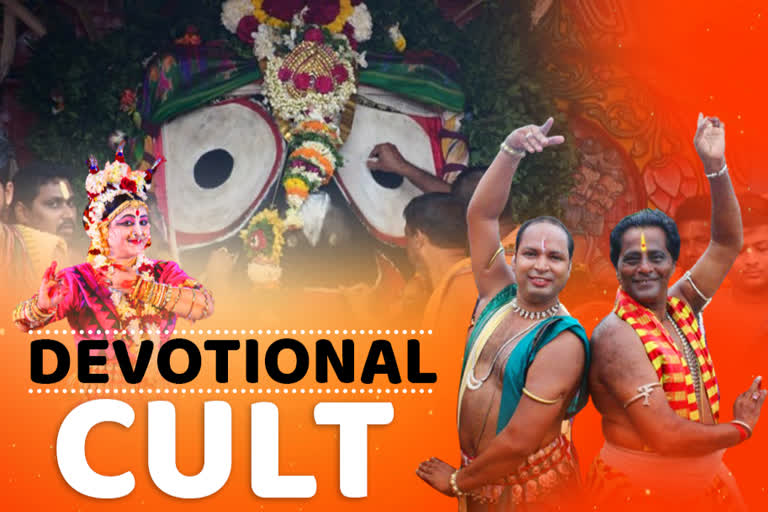Puri:Shree Jagannath, the Lord of the universe and His colourful car festival attract lakhs of pilgrims during car festival which is celebrated annually on the second day of the bright fortnight of Asadha (June-July).
The Jagannath consciousness has long enriched the cultural heritage of Odisha, in terms of its art, architecture, literature, music and dance. And this influence is reflected in the artistic offerings that form a part of this ritualistic procession, as devotees offer their services through performing arts, such as Telengi Baja (rhythmic beating of gongs), Banati Khela (acrobatics), Nagarakirtan (public singing and dancing).
The oldest in the list are the traditional dance of Mahari, Gotipua and Odissi. The lyrical and sensuous dance brings to life the sculptures adorning the walls of the Sun Temple at Konarak and the Jagannath Temple at Puri. The origins of these dances can be traced back to the 2nd century B.C. carvings of the Rani Gumpa caves in Udaygiri, Odisha.
Know the divine connection of famous dances with Rath Yatra Mahari is a ritualistic dance form from the eastern Indian state of Odisha that used to be performed at the temple of Lord Jagannath at Puri by devadasi dancers called Mahari. Following the abolition of the devadasi system, the dance has been discontinued at the Jagannatha Temple but is now performed on stage at many venues. The Mahari dance spurred the development of both Odissi and the Gotipua dance forms of Odisha. Mahari Dance is nearly a thousand years old with dance having been an integral part of the daily rituals at the Jagannath temple of Puri since the time of Ganga rulers of Utkala. In the twelfth century, Chodaganga Deva gave the dance a legal status, establishing new localities for the maharis to stay and introduced new ceremonies for the deity.
ALSO READ: Hera Panchami: When Goddess Laxmi fights with Lord Jagannath
The “Goti Pua” and “Odissi Dance “ are very attractive while being performed at the time of ceremonial procession of the Lord from the temple to the chariot by the servitors during the car festival or in front of the Lord’s chariot. The dancing artists through their gestures offer their salutations to the Lord with devotion and deep religious feeling. It looks as if the dancers with their devotional dancing performance are welcoming the Supreme Lord who is out on his annual sojourn.
Goti-pua, meaning ‘single or only boy’, is the temple dancing tradition kept alive by young male dancers and has heavily influenced the modern-day classical dance, Odissi. Due to the diminishing in their social and financial status, the Gotipua dance performed by pubescent boys impersonating female expressions became the preferred divine performers in the temples of Lord Jagannath.
The dance continues, along with the other rituals and performance tributes, till the end. Artistes, especially dancer-devotees get re-invigorated while offering their tribute, as they perform with a sense of spiritual surrender for their lord. After all, it is the only instance when Jagannath, brother Balabhadra and sister Subhadra leave their abode at the temple and come amidst the general populace for a direct interaction—keeping with the spirit of "Jagannatha Swami Nayana Pathagami Bhaba Tume" (May the Lord of the Universe be the Object of my Vision).
AlSO READ: Century old tradition: Nepal king performs Lords’ rituals in Jagannath temple
Speaking to ETV Bharat, Odissi dancer, Rupashree Mohapatra said," In the field of dance, “Mahari Dance” was introduced in the temple. Mahari dance is said to be the oldest form of modern Odissi Dance. In the course of time, Debadasi Nrutya by dancing girls (Devadasis) was introduced and it became the part of the ceremony of Lord Jagannath. At the time of Badasinghar ritual, Deba Dasis sing Geeta Gobinda and also dance when Lord Jagannath goes to bed for sleep. Therefore it can be said that Jagannath temple gave a great platform for the enrichment of Odishan music and dance."
Famous Gotipua dancer, Narayan Pande said, "Goti-pua, means ‘single or only boy’. Gotipua is a traditional dance form in the state of Odisha, India, and the precursor of Odissi classical dance. It has been performed in Odisha for centuries by young boys, who dress as women to praise Jagannath and Krishna. The dance is executed by a group of boys who perform acrobatic figures inspired by the life of Radha and Krishna. Earlier, the dancing artists who were performing “Mahari” dance were known as “Deba Dasis”."
"The “Mahari Seva” is one among the various rituals of the Sri Jagannath temple. This is one of the types of servitors among the thirty-six types of servitors of Lord Sri Jagannath. While thirty-five “Niyogs” are reserved for the male servitors, this one “Niyog” is meant only for women, and that too only for the “Mahari” dance. In course of time, after the demise of the original “Deba Dasi” ritual has been abolished in the Sri Jagannath temple. However, at present some dancing artists are performing “Mahari” dance in order to keep up the Sri Jagannath culture and tradition," Pande added.
ALSO READ:A sneak peek into the Jagannath temple kitchen in Puri
